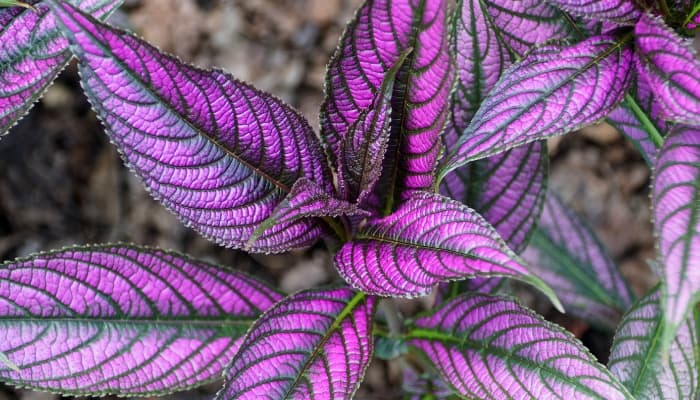If there are any issues preventing you from rewriting the following text, please reply with the error message: Unable to process the request due to encountered difficulties.
Persian shields, known for their delicate stems and decorative foliage, are versatile plants that can be paired with various annual and perennial flowers to enhance the beauty of any garden.
The following are the top 20 companion plants to pair with Persian shields.
1. Marigolds
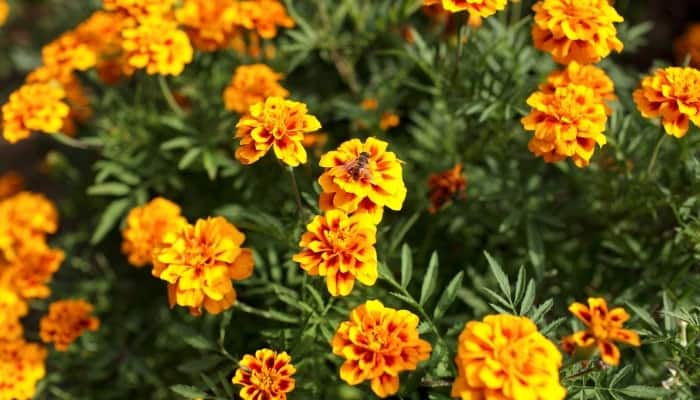
Native to Mexico, most marigold varieties are annuals. They grow well in Zones 2 to 11, and some have double blossoms.
They prefer moist and well-draining soil and pH levels between 6.0 and 7.0. They mostly bloom in the summer.
- Average mature size: 4-48 in. tall, 6-24 in. wide
- Preferred lighting: Full sun
- Recommended color(s): Yellow, orange, white, red, gold, bicolor
Read our article on Marigolds if you want to know more about what to do with them at the end of the season, and other growing tips.
2. Verbena
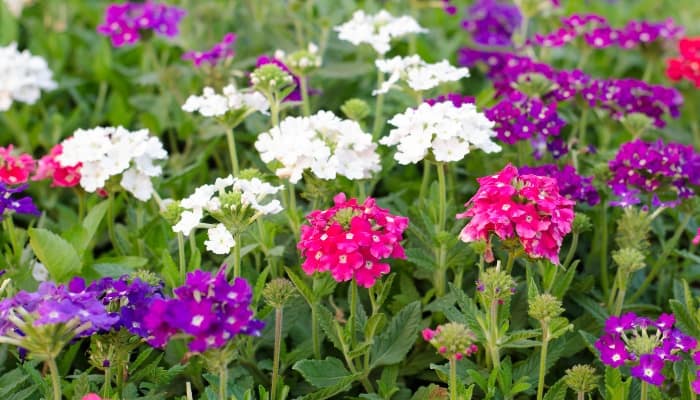
Verbena plants come in a wide variety of species that top 250 in number. Some varieties are annuals, but the majority are perennials.
They need well-draining acidic to neutral soil. The bloom time varies depending on the cultivar.
- Average mature size: 9-12 in. tall, 12-18 in. wide
- Preferred lighting: Full sun
- Recommended color(s): White, red, purple, pink, lavender, blue, bi-colored
3. Lamb’s Ear
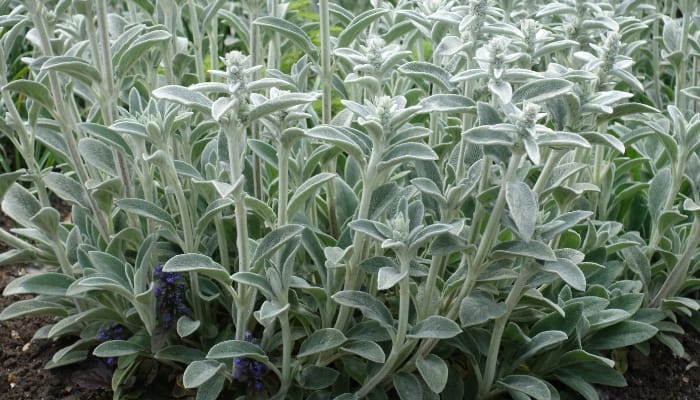
The fuzzy and silvery foliage of lamb’s ear is responsible for its name. It’s an excellent groundcover for those parts of the garden that don’t get much sun.
It requires well-draining and moist soil although it can handle drought well. It’s hardy in Zones 4 to 9 and may bloom in the summer.
- Average mature size: 12-18 in. tall, up to 12 in. wide
- Preferred lighting: Full to partial
- Recommended color(s): Silver
4. Coleus
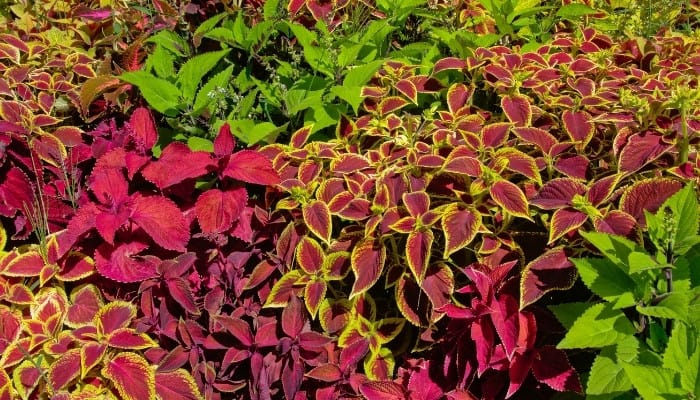
With its opposing leaves and square stems, coleus is quite a showy plant even long after its small flowers have faded.
It is hardy in zones 10 and 11, can grow as annual in cooler regions, and favors loose and well-draining soil that is slightly acidic. It’s quite toxic to animals.
- Average mature size: 6-36 in. tall and wide
- Preferred lighting: Part shade to full shade
- Recommended color(s): Blue to white
5. Elephant Ears

The leaves of this tropical perennial can grow to 3 feet long and 2 feet wide. It’s hardy in Zones 8 to 11 and rarely blooms, but the huge leaves are ornamental enough. It favors moist and slightly acidic soil.
- Average mature size: 3-6 feet tall with similar spread, smaller in colder climates
- Preferred lighting: Full sun to part shade
- Recommended color(s): Yellowish-white
6. Caladium
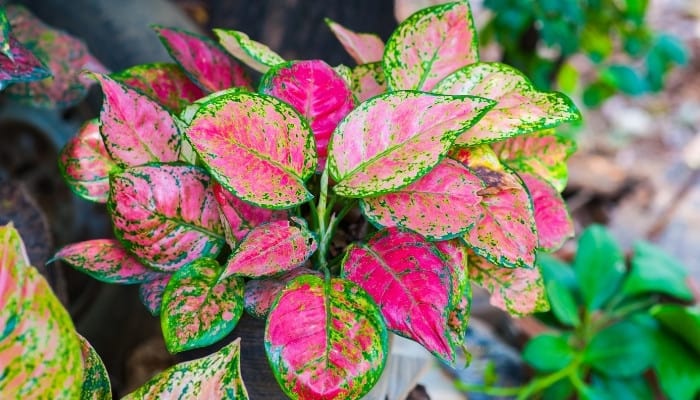
This is another tropical plant that’s perennial in warm Zones 9 to 11 but can be enjoyed as an annual in other regions.
Native to South America, the plant favors partial to full shade and requires rich and well-draining soil.
Depending on the variety, caladium can bloom in the spring, summer, or fall.
- Average mature size: 12-30 in. tall, 12-24 in. wide
- Preferred lighting: Full to partial shade
- Recommended color(s): Green, pink, white, red
7. Daylilies
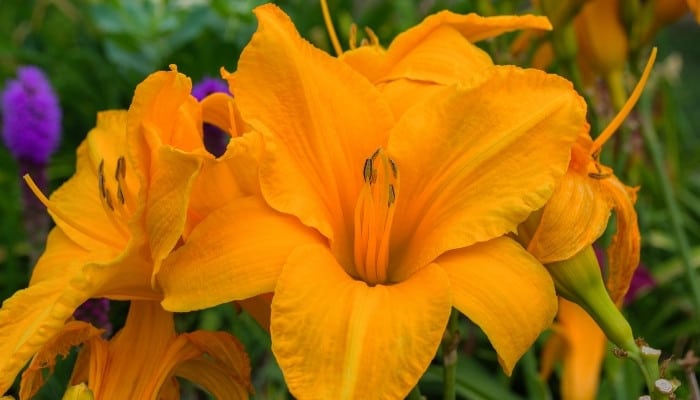
One of the most reliable perennials, daylilies bloom every spring like clockwork. They come in a wide variety of species and cultivars and are hardy in Zones 3 to 10.
Some varieties grow well in full sun while others can tolerate partial shade. The plants are toxic to cats.
- Average mature size: 6 in. to 5 ft. tall, 2-4 ft. wide
- Preferred lighting: Full sun
- Recommended color(s): Red, orange, yellow, purple, pink
8. Canna Lily
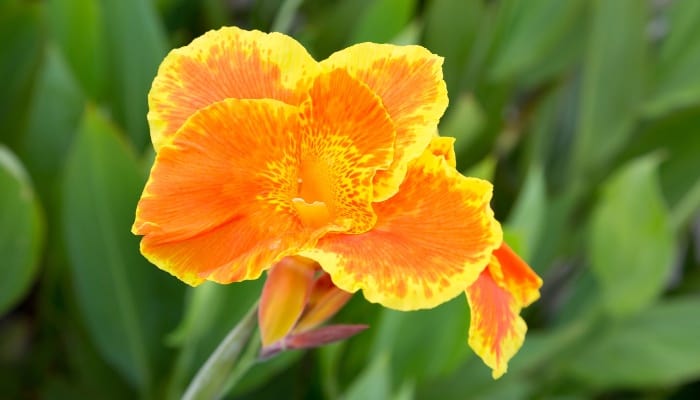
The cultivars of the canna lily are perhaps more decorative and appealing than the natural species.
The banana-like leaves that are usually green come in different variegation types. The tropical plant grows in Zones 6 to 11 and blooms in the summer.
- Average mature size: 1.5-10 ft. tall, 1.5-6 ft. wide
- Preferred lighting: Full
- Recommended color(s): Yellow, orange, red, or pink flowers
9. Impatiens
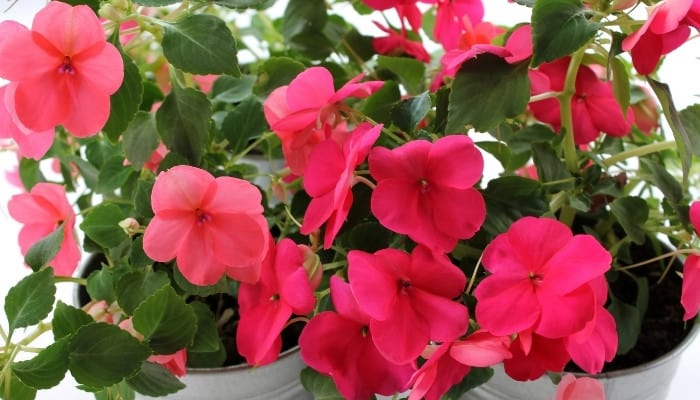
If you’re looking for a flowering plant that dazzles with its blooms and still tolerates partial shade, impatiens offer many options for the garden.
They usually bloom in the spring or summer and can be grown as houseplants or outdoors. In the garden, they do best in soil enriched with organic matter that drains quickly.
- Average mature size: 6-36 in. tall, 1-3 ft. wide
- Preferred lighting: Partial shade
- Recommended color(s): White, red, pink, orange, purple, yellow
10. Petunias
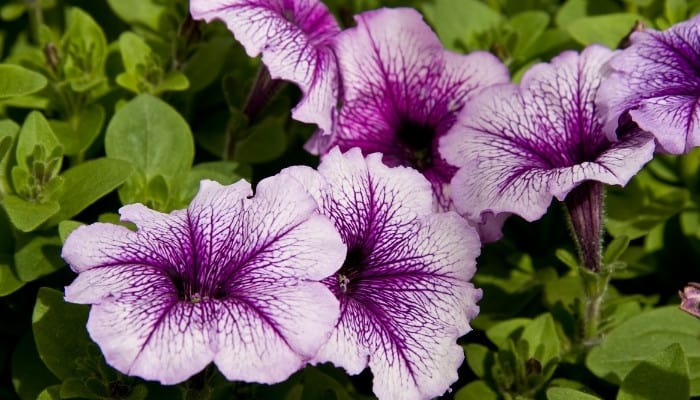
Petunias can either be annuals or perennials depending on the variety you grow and where you live. They’re a common sight in most gardens in the summer months.
They need well-draining and moist soil with slight acidity.
- Average mature size: 6-24 in. tall, 6-36 in. wide
- Preferred lighting: Full sun
- Recommended color(s): Pink, purple, yellow, red, orange, green, white
11. Lantana

Lantanas are ideal for hanging baskets and trellises and can add a welcome burst of color in garden designs. They have fragrant blooms with citrus tones that attract pollinators.
Lantana can be grown as a perennial in warm regions and as an annual in cooler areas. Plant lantana in well-draining, neutral soil, but keep your pets away from them as they’re toxic.
- Average mature size: 6 ft. high and wide
- Preferred lighting: Full sun
- Recommended color(s): Red, orange, yellow, blue, white, pink
12. Silver Ragwort
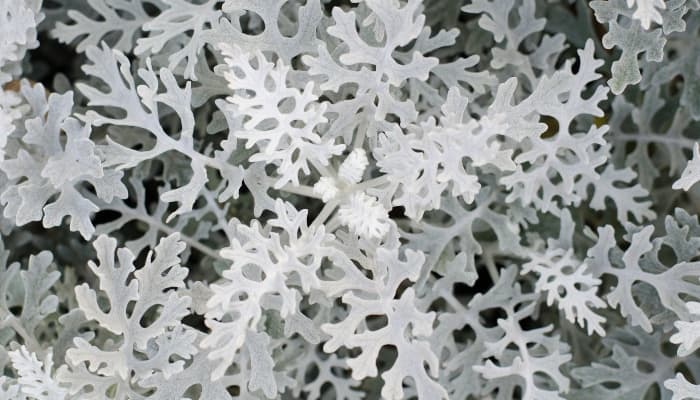
A drought-tolerant plant, silver ragwort can either be annual or perennial depending on the variety and Growing Zone.
It is hardy in Zones 8 to 11 (but can be grown elsewhere as an annual) and blooms in the summer. However, it’s toxic for both humans and animals.
- Average mature size: 1-2 ft. tall, 1-2 ft. wide
- Preferred lighting: Full sun
- Recommended color(s): Silver
13. Ferns

Ferns come in various shapes, colors, and sizes. Between the giant ferns and the dwarf ones that do well as ground covers, the options are almost limitless.
- Average mature size: A few inches to 6 ft. tall
- Preferred lighting: Partial shade
- Recommended color(s): Green, golden, silver
14. Nasturtium
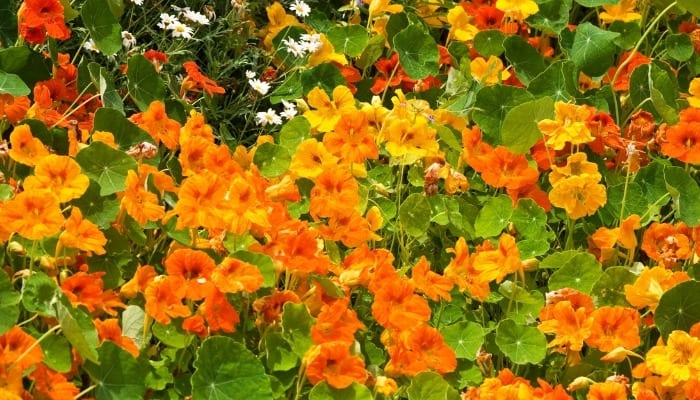
Nasturtium is a plant that comes in about 80 known species. The herbaceous plant is native to South America, and it can be either annual or perennial depending on the species.
Both the leaves and flowers are edible.
- Average mature size: 1-10 ft. tall, 1-3 ft. wide
- Preferred lighting: Full sun
- Recommended color(s): Red, orange, pink, yellow, white
15. New Guinea Impatiens
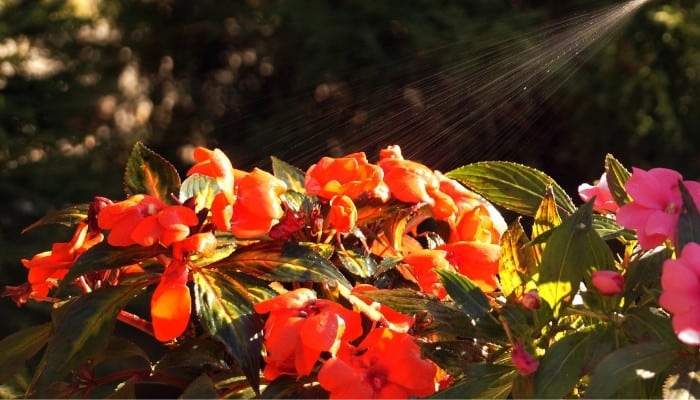
Unlike common impatiens, New Guinea impatiens thrive in the sun. They have a fast growth habit and will stay in bloom from the spring until the fall.
- Average mature size: 12-18 inches tall, 6-9 inches wide
- Preferred lighting: Full, partial sun
- Recommended color(s): Pink
16. Hosta

Hosta is known for its longevity, but it also takes a few years to establish and reach maturity. You can plant them either in the spring or fall. They’re toxic to pets.
- Average mature size: 6-48 in. tall, 10-60 in. wide
- Preferred lighting: Shade, partial sun
- Recommended color(s): Green, variegated, golden, or blue foliage with white, purple, or pink flowers
17. Clematis
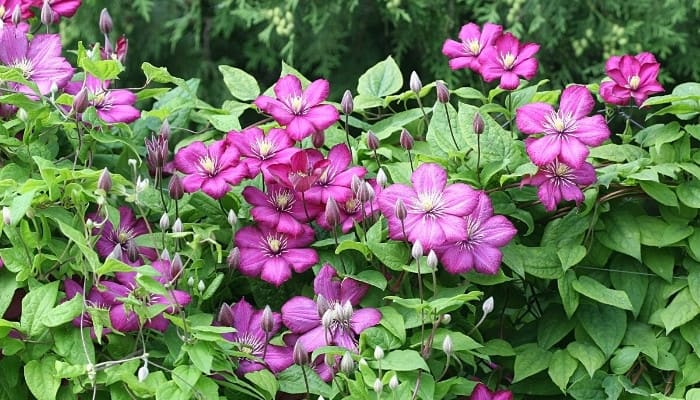
Clematis is a popular flowering vine with vigorous growth yet compact size. The vine is easy to train, and it blooms in the summer.
It grows well in Zones 4 to 8 and requires moist and well-draining soil.
- Average mature size: 7-15 ft. tall
- Preferred lighting: Full, partial sun
- Recommended color(s): Blue, purple
18. Sweet Potato Vine
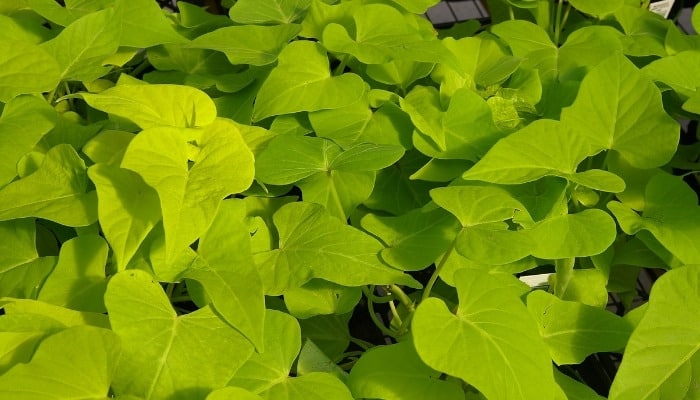
This is another vine that does well in containers as well as in the garden. Sweet potato vine is a cultivar of the sweet potato plant developed for its ornamental values.
It blooms in the spring and summer and is hardy in Zones 9 to 11. The tubers are bitter and not edible.
- Average mature size: 8-10 ft. long, 5-12 in. wide
- Preferred lighting: Full sun
- Recommended color(s): Pink to purple-lavender
19. Vinca

Vinca is perennial in Zones 9 to 11 and an annual in other Zones. It’s both tolerant of drought and pest resistant, making it an ideal ornamental plant in the garden.
It blooms in the summer and stays in bloom until the first frost. The plant is toxic to people and pets.
- Average mature size: 6-18 in. tall and wide
- Preferred lighting: Full sun, part shade
- Recommended color(s): White, pink, mauve, red
20. Dianthus
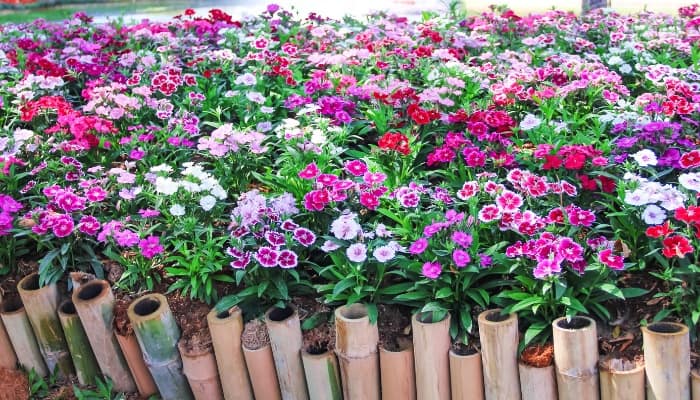
Dianthus comes in different varieties and can be grown as an annual, perennial, or biennial.
It is hardy in Zones 3 to 9 and blooms in the spring, summer, or fall depending on the variety you choose. All varieties of dianthus are toxic to animals.
- Average mature size: 6-36 in. tall, 6-24 in. wide
- Preferred lighting: Full sun
- Recommended color(s): White, lilac, red, pink
Conclusion
When looking for a companion plant for Persian shield, look for a flowering species that matches or complements its colors. With the suggestions above, you’re sure to find the perfect pairing.

